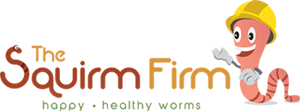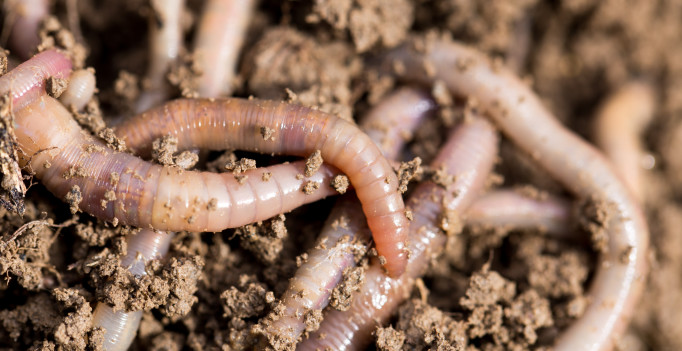It’s time to take soil fertility into your own hands by making compost from your food scraps.
But don’t worry there’s no reason for you to do the dirty work yourself. Instead, a horde of hungry worms is ready to munch through your leftovers and turn them into plant fuel.
But which worms are best? And how can you ensure you get the right ones for your compost system? This article will teach you why red wigglers are an ideal option for your worm bin, and why it’s smart to invest in quality worms from day one.
First though, let’s explore why it’s worth having a worm bin to begin with.
What is Vermicomposting?
Worm composting, also known as vermicomposting, is the process of using worms to convert food scraps, shredded paper, and other organic material into compost.
Vermicomposting lets you speed up the traditional composting process by harnessing the power of worms to do the work for you. By allowing worms to munch through your refuse, the scraps will break down significantly quicker than they could through microbial activity alone, leaving you with an environmental-friendly soil additive for your garden.
In fact, worm compost is more beneficial for your garden than other varieties. Passing through a worm’s digestive system is one of the best things that can happen to your leftovers, as it turns them into a nutrient-dense form of fertilizer. Vermicompost also makes nutrients bioavailable, meaning that they are easier for plant roots to take in.
In short, making worm compost is a quick, cost-effective, and environmentally-friendly way to improve your garden soil. The key, however, is setting up your system for success by using the right kind of worms.
Why Worm Selection Matters
There are more than 2,700 species of earthworms on the planet today, but only a few are well suited for a home compost system. If you’re wondering why red wigglers (Eisenia fetida) are such a common choice for worm bins, the answer is that these little worms are ideal for its conditions in ways that others can’t compare- especially nightcrawlers.
The Problem with Nightcrawlers
If you’re new to vermicomposting, you might be tempted to head into the backyard to start collecting some nightcrawlers for your bin. That would be a mistake, as these worms aren’t well-suited for its conditions and won’t make you the compost in any reasonable timeframe.
Nightcrawlers are deep soil dwellers, which means that they like to dig their burrows several feet into the ground. This is great for aerating your lawn and garden, but it is a disadvantage for converting food scraps on the surface into compost.
In contrast, red wigglers only live within the top six inches of soil, making them better suited for the shallow box conditions of a standard worm farm. That’s one of the reasons why red wigglers are the most preferred worms for indoor composting.
9 Benefits of Using Red Wigglers for Worm Composting
Living on the soil surface isn’t the only reason why red wigglers are ideal for worm bins. Below are nine of the biggest benefits of using this scrappy species for vermiculture.
- Can consume up to half their body weight in food scraps each day.
- Thrive on a diet of fruit, vegetable, bread, and paper scraps, (but no animal products!) Check out this infographic to learn what else worms can eat.
- Extremely hardy and easy to care for.
- Can tolerate a wide range of temperatures (65 F to 8 F, or 18 C – 27 C).
- Mature and reproduce more quickly than larger worm species.
- Prefer to live in a blend of food scraps and bedding than dirt (ideal worm bin conditions).
- Live in colonies and can handle high density in a worm bin.
- Typically content to stay in their container (won’t try to crawl out).
Where to Find Red Wigglers
Knowing why red wigglers are ideal for worm bins and getting a supply for yourself are two different matters. The good news is that quality worms are easy to come by, so long as you know where to look.
If you are willing to be patient, it’s possible to harvest your own red wigglers for a worm bin. Be sure to check out old compost piles, rotting logs, and the top few inches of leaf litter to try to identify clumps of them. Red wigglers in the wild can be small, so you will need to look carefully to spot them.
An easier option? Buy red wigglers by the pound from The Squirm Firm. We offer a 100% Live Worm Arrival Guarantee to ensure you can get started with your worm bin the instant your worms arrive.
Get Started with Vermiculture Today!
Starting up with vermiculture is a fun process, but your success will depend on sourcing the right worms to begin with. By ensuring you have a supply of top quality red wigglers on hand, you will soon be turning wasted food into some of the world’s most nutrient-rich compost.
You can look through our buying options to find what amount of worms makes sense for your situation. It pays to stock up, as the more you buy, the cheaper they are per pound.
Get started setting up a worm bin today! Your best garden soil awaits.


Be the first to comment